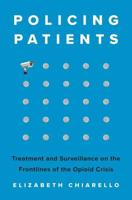Publisher's Synopsis
In recent years, the advent of biosensors and bioelectronics has facilitated the swift and precise detection of numerous biomolecules or pathogens in animal samples, aquatic habitats, and plants. These technologies have emerged as potent assets for the agriculture and aquaculture industries. Many experts have raised the question; how might the integration of biosensors into portable devices or automated monitoring systems enable on-site and real-time detection of diverse biomolecules or pathogens? Agriculture and Aquaculture Applications of Biosensors and Bioelectronics presents the recent developments in biological recognition elements, transducer materials, and signal processing techniques for biosensors and bioelectronics used in agriculture and aquaculture applications. Sophisticated biosensors and bioelectronics operate through the immobilization of biological recognition components-such as enzymes or antibodies-on a transducer surface. This immobilization process allows for the targeted recognition and binding of biomolecules or pathogens. The resulting electrical, optical, or chemical changes triggered by the recognition event are quantifiable through various methods and are often enhanced by applications utilizing artificial intelligence (AI). The necessity for high sensitivity and selectivity, the optimization of biocompatibility and stability, and the integration of biosensors with AI-aided solutions are just some of the challenges and opportunities in developing biosensors for high-tech agriculture and aquaculture. This book targets a mixed audience of biotechnology engineers, biosensors scientists, bioelectronics researchers, high-tech agriculture analysts, Ph.D. scholars, researchers, academics, professionals, engineers, and students.







